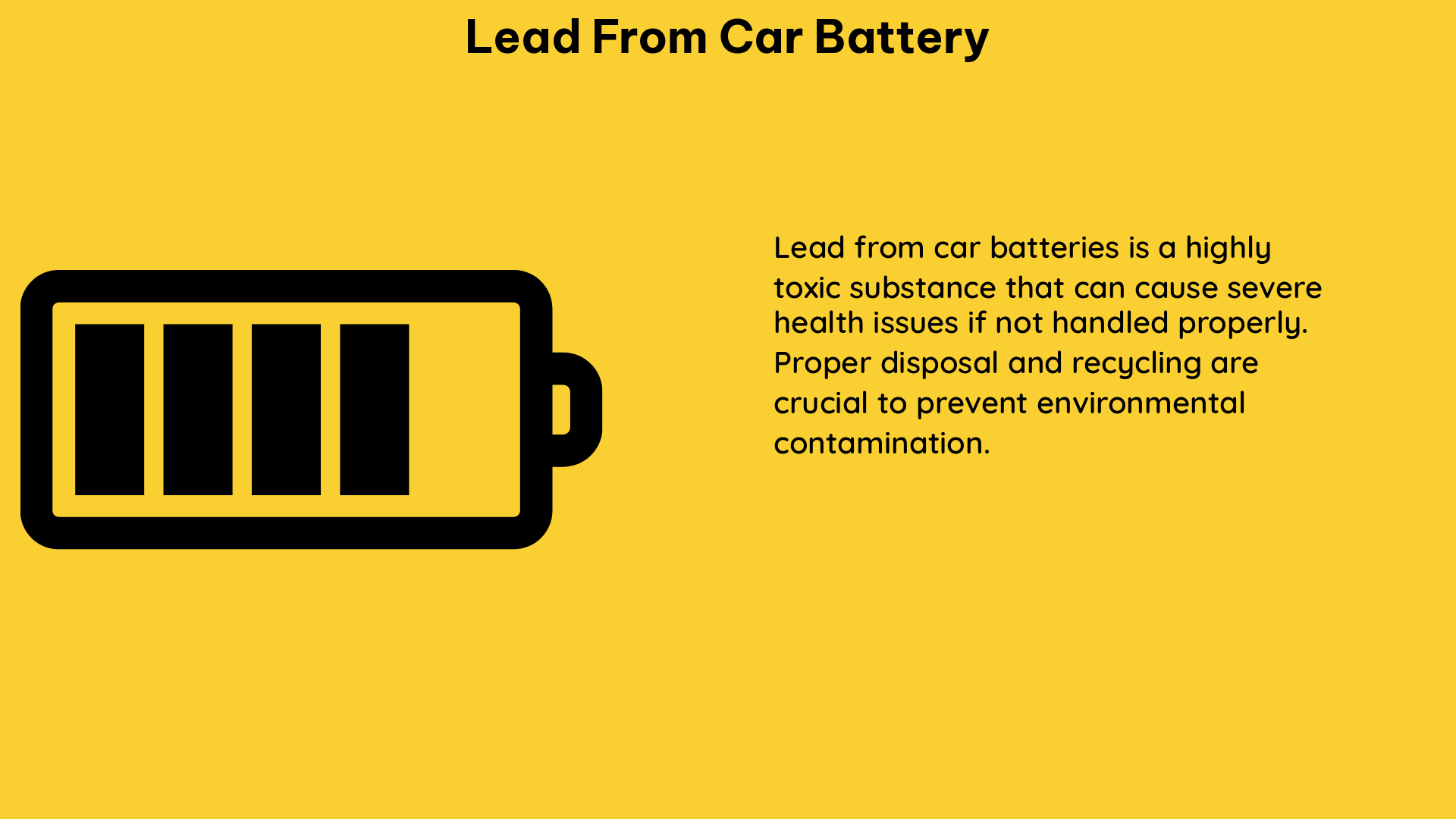Lead-acid batteries are a ubiquitous component of modern vehicles, and the lead they contain is a valuable resource that can be recycled and reused. In this comprehensive guide, we will delve into the intricacies of lead from car batteries, providing a wealth of technical and quantifiable data to help you understand this important aspect of the automotive industry.
The Composition of a Car Battery
A typical car battery contains approximately 25 pounds of lead, with the actual amount varying depending on the battery’s size and type. For example, a 12-volt car battery typically contains about 18-20 pounds of lead, while a 24-volt battery can contain up to 40 pounds of lead.
The lead in a car battery is primarily found in the form of lead plates, which are immersed in a sulfuric acid solution. During the battery’s operation, the lead plates undergo a chemical reaction that generates the electrical current used to power the vehicle.
The Lead Extraction Process

The process of extracting lead from car batteries involves several steps:
-
Draining the Sulfuric Acid: The first step is to drain the sulfuric acid from the battery, which can be a hazardous and environmentally sensitive task. The acid must be properly contained and disposed of or recycled.
-
Melting the Lead Plates: Once the acid has been removed, the lead plates are melted down, typically in a high-temperature furnace. This process can recover approximately 2.5 to 3 pounds of pure lead from a 25-pound car battery.
-
Refining and Reuse: The extracted lead is then refined and purified, ready to be used in the production of new lead-acid batteries or other lead-based products.
The Global Lead-Acid Battery Market
The global lead-acid battery market is a significant industry, with a value of USD 50.1 billion in 2020. This market is expected to continue growing, driven by the increasing demand for lead-acid batteries in the automotive and renewable energy sectors.
China is a particularly important player in the lead-acid battery market, accounting for 100% of automotive lead-acid batteries start power and 90% of the electric bicycle motive power. The country’s recycling rate for lead-acid batteries is over 95%, making it one of the most recycled products in the world.
The Environmental Impact of Lead Recycling
While the recycling of lead-acid batteries is essential for reducing the demand for primary lead mining, the process itself can have significant environmental impacts if not properly regulated. The extraction and refining of lead can produce harmful emissions, including lead dust and other pollutants.
To mitigate these environmental concerns, it is crucial to prioritize sustainable and environmentally friendly practices in the recycling of lead-acid batteries. This includes the use of advanced pollution control technologies, proper waste management, and the implementation of strict safety protocols for workers.
The Future of Lead-Acid Batteries
The global demand for lead is expected to increase in the coming years, driven primarily by the growing demand for lead-acid batteries in the automotive and renewable energy sectors. This trend highlights the importance of continued investment and innovation in the lead recycling industry, as well as the development of more sustainable and environmentally friendly battery technologies.
In conclusion, lead from car batteries is a valuable resource that can be recycled and reused, but the process requires careful consideration of the environmental and safety implications. By understanding the technical details and quantifiable data surrounding lead from car batteries, we can work towards a more sustainable and efficient recycling industry that meets the growing global demand for this essential material.
Reference:
1. https://www.reddit.com/r/ScrapMetal/comments/159fsxg/ever_wondered_how_the_lead_is_extracted_from_lead/
2. https://www.youtube.com/watch?v=uWx7lTadMq0
3. https://www.sciencedirect.com/science/article/abs/pii/S0921344914002262
4. https://batteryuniversity.com/article/bu-804b-sulfation-and-how-to-prevent-it
5. https://leadthecharge.org/scorecards-summary/methodology/
6. https://www.globenewswire.com/news-release/2021/06/29/2255078/0/en/Global-Lead-Acid-Battery-Market-Size-Share-Trends-Analysis-Report-2021-by-Key-Players-Johnson-Controls-Exide-Industries-EnerSys-Clarios-GS-Yuasa-East-Penn-Manufacturing-Leoch-International-HOPPECKE-Batteries-NorthStar-Battery-AtlasBX-C&C-Technology-HBL-Power-Systems-Sebang-Global-Battery-Soulbrain-GS-Yuasa-Battery-Technology-Ritar-Power-Source-Capital-EVE-Energy-Coslight-Technology-Tianneng-Power-Amara-Raja-Batteries-Hankook-ATL-Furukawa-Industrial-Battery-Limited-Exide-Industries-South-Africa-and-First-National-Battery.html

The lambdageeks.com Core SME Team is a group of experienced subject matter experts from diverse scientific and technical fields including Physics, Chemistry, Technology,Electronics & Electrical Engineering, Automotive, Mechanical Engineering. Our team collaborates to create high-quality, well-researched articles on a wide range of science and technology topics for the lambdageeks.com website.
All Our Senior SME are having more than 7 Years of experience in the respective fields . They are either Working Industry Professionals or assocaited With different Universities. Refer Our Authors Page to get to know About our Core SMEs.